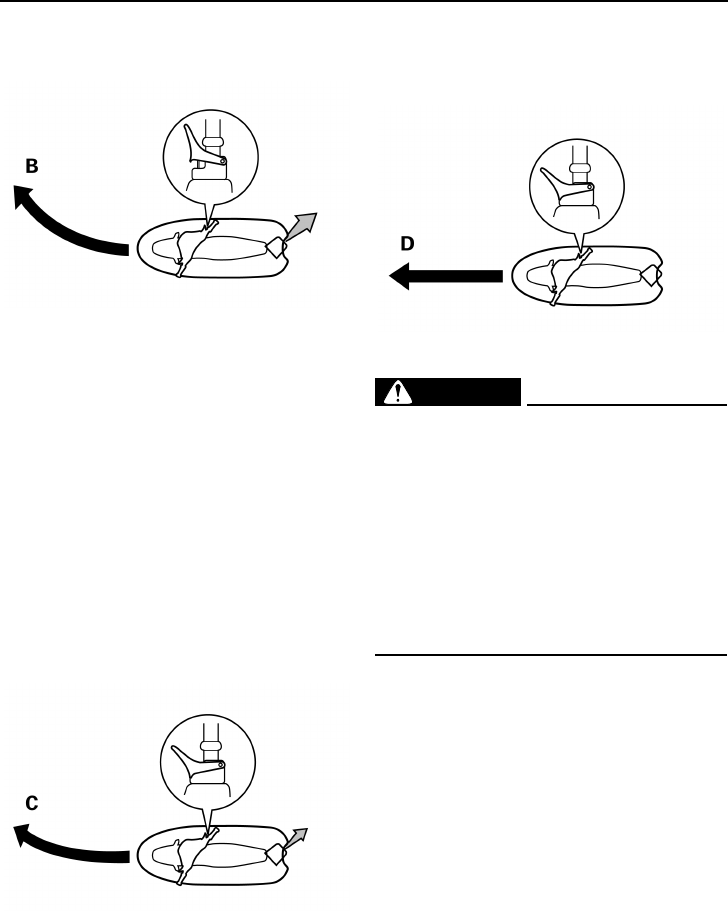
Operation
64
B. Less throttle produces lower thrust, so
the watercraft will turn more gradually.
C. Releasing the throttle lever completely
produces only minimum thrust. If you are
traveling at speeds above trolling, you will
have rapidly decreasing ability to steer
without throttle. You may still have some
turning ability immediately after releasing
the throttle lever, but once the engine
slows down, the watercraft will no longer
respond to handlebar input until you ap-
ply throttle again or you reach trolling
speed.
At trolling speed, the watercraft can be
turned gradually by handlebar position
alone using just the amount of thrust
available at idle.
D. If the engine is stopped while riding, there
is no thrust. The watercraft will go straight
even though the handlebars are turned.
You need throttle to steer.
WARNING
EWJ00770
● Do not release the throttle lever when
trying to steer away from objects—you
need throttle to steer. A collision could
result in severe injury or death.
● When operating at higher speeds, make
gradual turns or slow down before turn-
ing. Sharp high-speed turns may cause
the watercraft to slide sideways or spin,
throwing the operator and passengers
overboard, which could cause an injury.
This model is equipped with the Yamaha En-
gine Management System (YEMS) that in-
cludes an off-throttle steering (OTS) system.
It will activate at planing speeds should you
attempt to steer the watercraft after releasing
the throttle lever (see condition C above).
The OTS system assists in turning by continu-
ing to supply some thrust while the watercraft
is decelerating, but you can turn more sharply
if you apply throttle while turning the handle-
bars. The OTS system does not function be-
low planing speeds or when the engine is off.
Once the engine slows down, the watercraft
will no longer turn in response to handlebar in-
UF1K12E0.book Page 64 Friday, July 28, 2006 10:35 AM


















